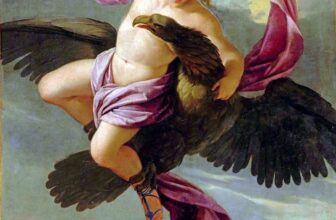
Illuminating the Darkness: How Gerrit van Honthorst Painted with Light
Gerrit van Honthorst (1592–1656) was one of the most captivating artists of the Dutch Golden Age, celebrated for his striking use of light and shadow. Often referred to as “Gerard of the Night” (Gerardo delle Notti), Honthorst mastered the art of painting nocturnal scenes illuminated by a single candle or lantern. His dramatic compositions and warm, glowing color harmonies brought an emotional, theatrical presence to 17th-century Dutch art. Today, his legacy continues to enchant collectors, art historians, and museum visitors across the world.
In this article, we will explore Gerrit van Honthorst’s biography, his most famous artworks, his unique candlelit technique, his influence on European painting, and how much his paintings are worth in today’s art market.
Early Life and Artistic Training
Gerrit van Honthorst was born in Utrecht, the Netherlands, in 1592, into a family closely connected to the world of art and architecture. His father, Herman Gerritsz van Honthorst, was a painter and decorator who worked on commissions for churches and noble families. Surrounded by creativity, young Gerrit displayed exceptional artistic talent from an early age.
Honthorst began his formal artistic training under Abraham Bloemaert, one of Utrecht’s leading painters. Bloemaert’s studio was a vibrant center of artistic innovation and played a key role in shaping many prominent Dutch artists. Under Bloemaert’s guidance, Honthorst learned to master anatomy, perspective, and the dramatic possibilities of chiaroscuro , the interplay between light and dark.
However, Honthorst’s artistic journey took a decisive turn when he traveled to Italy around 1610, a pilgrimage many ambitious Northern European artists made to study the great masters of the Renaissance and Baroque periods.
The Italian Sojourn: Influence of Caravaggio
While in Rome, Gerrit van Honthorst encountered the revolutionary works of Michelangelo Merisi da Caravaggio. Caravaggio’s naturalism, bold contrasts of light and shadow, and emotionally charged scenes profoundly changed the direction of European art. Honthorst became fascinated by the intensity and realism of Caravaggio’s paintings, adopting his use of dramatic lighting to create an atmosphere of mystery and intimacy.
In Rome, Honthorst was warmly received by patrons and art collectors who admired his ability to paint night scenes illuminated by candlelight. He became part of a circle of artists known as the Caravaggisti, painters from Northern Europe who absorbed and reinterpreted Caravaggio’s revolutionary style. His contemporaries included Dirck van Baburen and Hendrick ter Brugghen, both fellow Dutch Caravaggisti.
During his stay in Italy, Honthorst gained significant patronage from influential figures such as Cardinal Scipione Borghese and Marchese Vincenzo Giustiniani, two of the most important art collectors in Rome at the time. His ability to balance realism with theatrical composition quickly made him one of the most sought-after foreign painters in the city.
Return to Utrecht and Artistic Maturity
In 1620, Gerrit van Honthorst returned to his native Utrecht, where he established a highly successful studio. By then, his Italian experience had transformed his artistic vision, and his unique candlelit style stood out in the Dutch art scene. His works were characterized by luminous candlelight, carefully choreographed compositions, and emotional human expression.
Honthorst’s studio attracted many apprentices and followers, and his influence spread widely across Northern Europe. His ability to combine Dutch realism with Italian drama created a visual language that appealed to both local patrons and foreign courts.
The Art of Candlelight: Honthorst’s Signature Style
Gerrit van Honthorst’s paintings are instantly recognizable for their glowing illumination. He often depicted figures gathered around a single candle, lamp, or torch, casting a warm, golden radiance across faces and fabrics. This technique not only enhanced the sense of intimacy but also heightened the emotional impact of his compositions.
Honthorst was meticulous in his study of light behavior. Unlike many artists who simply used contrast to achieve drama, he analyzed how candlelight subtly diffused over skin tones, glimmered on metal, and softened the edges of shadows. His technique, known as tenebrism, emphasized the dominance of darkness, allowing light to carve out forms and direct attention to key details.
Common Themes and Motifs
Honthorst’s subjects often included:
Biblical scenes, such as The Adoration of the Shepherds or Christ Before the High Priest, emphasizing spiritual revelation through light.
Genre scenes, featuring musicians, card players, or tavern gatherings bathed in candlelight.
Mythological and allegorical subjects, presented with theatrical realism.
Portraits of nobles and royalty, in which his mastery of lighting gave his sitters a majestic and lifelike presence.
This focus on candlelight transformed his paintings into meditations on perception itself , how light reveals truth, and how shadow conceals it.
Gerrit van Honthorst’s Most Famous Artwork
Among his many masterpieces, “The Matchmaker” (1625) stands as Gerrit van Honthorst’s most famous and widely celebrated work. This painting captures the essence of his artistic genius , a vibrant, candlelit scene filled with humor, sensuality, and psychological depth.
The Matchmaker (1625)
Medium: Oil on canvas
Location: Centraal Museum, Utrecht
Date: 1625
In The Matchmaker, a young man offers coins to a smiling courtesan while an older woman, the “matchmaker,” looks on approvingly. The candle in the center of the scene illuminates the characters’ faces, creating a powerful sense of intimacy. The glow of the flame enhances the flesh tones and textures, making the viewer almost feel the warmth of the candle.
What makes The Matchmaker remarkable is its subtle moral commentary. Beneath the surface of laughter and flirtation lies a critique of human folly and desire , a hallmark of Dutch genre painting. The composition reflects both Caravaggio’s influence and Honthorst’s unique ability to translate Italian theatricality into Dutch realism.
Other Notable Works:
“Christ Before the High Priest” (1617) – A dramatic religious scene in which Christ stands serenely as the High Priest interrogates him, illuminated by a single candle.
“The Adoration of the Shepherds” (1620) – A tender depiction of the nativity, with the newborn Christ as the central source of light.
“The Concert” (1623–1625) – Musicians and singers gathered around a candle, exuding joy and harmony through light and expression.
“The Denial of St. Peter” (1620–1625) – Another powerful biblical narrative that demonstrates Honthorst’s skill in storytelling through light and gesture.
Each of these paintings showcases his technical mastery and emotional sensitivity. Honthorst’s scenes feel alive , each figure caught in a fleeting moment of drama or revelation.
Patronage and Court Commissions
After his return to the Netherlands, Honthorst’s fame reached far beyond Utrecht. His reputation for creating lifelike and dramatic portraits earned him commissions from several European courts. In 1628, he was invited to England by King Charles I, who admired his style and commissioned several portraits, including one of Queen Henrietta Maria.
Honthorst also worked for the House of Orange, painting members of the Dutch royal family and creating grand allegorical works celebrating their achievements. These commissions demonstrated his versatility , while his candlelit genre scenes captured everyday life, his royal portraits embodied dignity, grace, and power.
His large-scale works for palaces and public buildings combined his Italian-inspired theatricality with Dutch clarity and realism, influencing generations of court painters throughout Europe.
Artistic Legacy and Influence
Gerrit van Honthorst was instrumental in shaping the Utrecht Caravaggisti movement, bridging the artistic traditions of Italy and the Netherlands. His approach to light and human emotion deeply influenced other Dutch artists such as Jan Gerritsz van Bronckhorst, Jan van Bijlert, and Matthias Stom.
Beyond the Netherlands, Honthorst’s impact can be seen in the works of Georges de La Tour, a French Baroque painter who also specialized in candlelit scenes. His influence even reached into the 18th century, inspiring painters who explored nocturnal lighting and theatrical staging.
In art history, Honthorst represents a unique synthesis: he brought the spiritual and dramatic sensibilities of Italian Baroque painting into the heart of Dutch realism. His paintings remind us that art is not only about form and color but also about atmosphere, emotion, and human connection.
How Much Is Gerrit van Honthorst’s Artwork Worth Today?
Today, Gerrit van Honthorst’s artworks are highly prized in the international art market. His masterful technique, historical importance, and the rarity of his candlelit scenes make his paintings coveted by museums and private collectors alike.
Auction Prices and Market Value
Over the past few decades, Honthorst’s works have fetched significant sums at major auction houses such as Christie’s, Sotheby’s, and Bonhams.
In 2018, The Duet (a candlelit musical scene) sold for over $6 million USD at Sotheby’s, reflecting the strong demand for his best works.
The Smiling Girl Holding a Candle achieved around $3 million USD, showcasing the enduring appeal of his intimate genre scenes.
Smaller oil sketches or studio pieces attributed to Honthorst or his workshop typically range from $200,000 to $800,000 USD, depending on provenance and condition.
His religious paintings and portraits of royal patrons can command even higher prices, especially when well-preserved and with verified documentation.
Factors Influencing Value
Several factors determine the market value of a Gerrit van Honthorst painting:
Authenticity and Provenance – Verified works with strong documentation and museum exhibition history hold the highest value.
Subject Matter – Candlelit scenes and religious subjects are more desirable than straightforward portraits.
Condition – Paintings that retain their original surface and color vibrancy are more valuable.
Market Trends – Growing interest in the Dutch Golden Age and rediscoveries of Caravaggisti artists have pushed prices upward.
Overall, collectors recognize Honthorst not only as a major Dutch painter but also as one of Europe’s finest interpreters of Baroque light.
Where to See Gerrit van Honthorst’s Art Today
Honthorst’s masterpieces can be admired in major museums across Europe and the United States. Notable collections include:
Centraal Museum, Utrecht – Home to The Matchmaker and several other key works.
National Gallery, London – Features Christ Before the High Priest.
Louvre Museum, Paris – Houses The Concert and other works showing his Italian influence.
Gemäldegalerie, Berlin – Holds several of his biblical and allegorical scenes.
National Gallery of Art, Washington, D.C. – Displays candlelit masterpieces that illustrate his mature style.
These institutions celebrate Honthorst’s contribution to European art history, allowing visitors to experience the glowing brilliance of his candlelight firsthand.
The Enduring Glow of Gerrit van Honthorst’s Legacy
Gerrit van Honthorst remains one of the most intriguing painters of the Dutch Golden Age , a bridge between the drama of Italian Baroque and the realism of Dutch genre painting. His candlelit interiors, theatrical compositions, and masterful handling of light transformed ordinary scenes into moments of profound beauty.
In his hands, light became more than illumination , it became a symbol of knowledge, emotion, and divine presence. Whether painting a biblical revelation or a simple domestic scene, Honthorst infused his subjects with warmth, humanity, and drama.
Today, his paintings continue to command admiration in museums and strong prices in the art market, confirming his enduring relevance. Gerrit van Honthorst’s art reminds us that even in darkness, light reveals truth , and that the flicker of a candle can illuminate the depths of the human soul.




